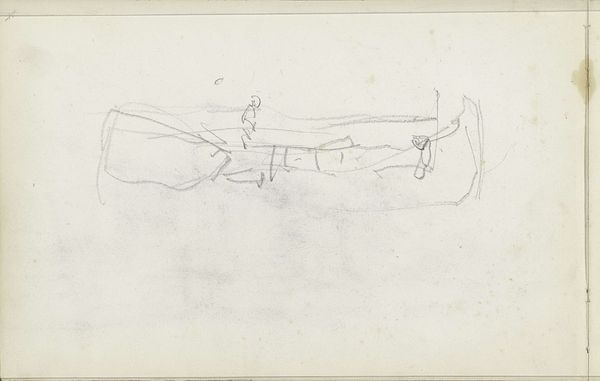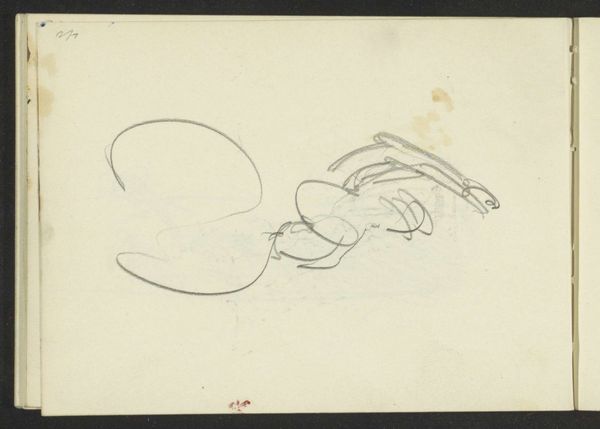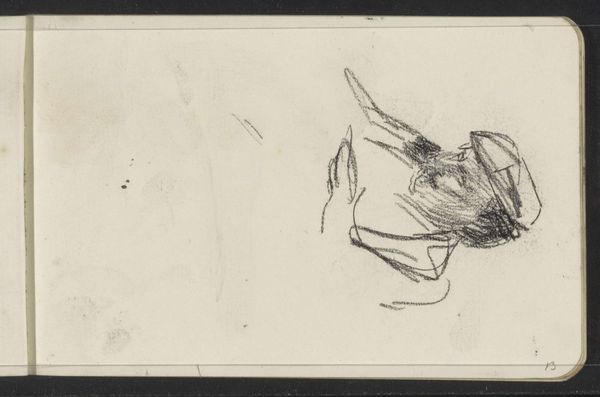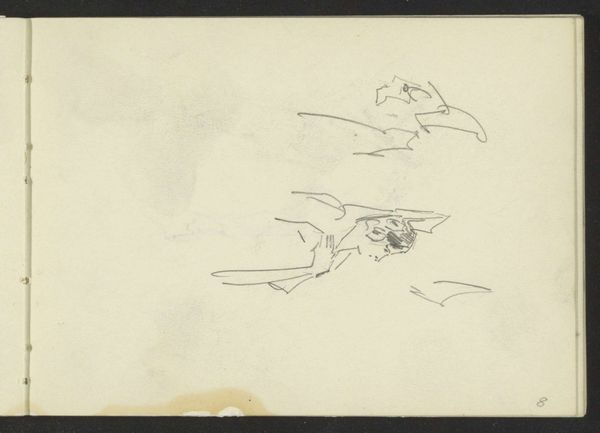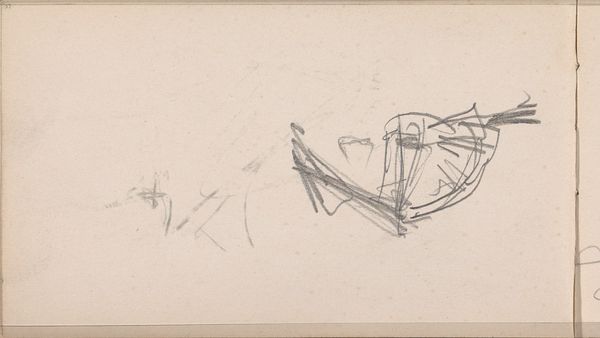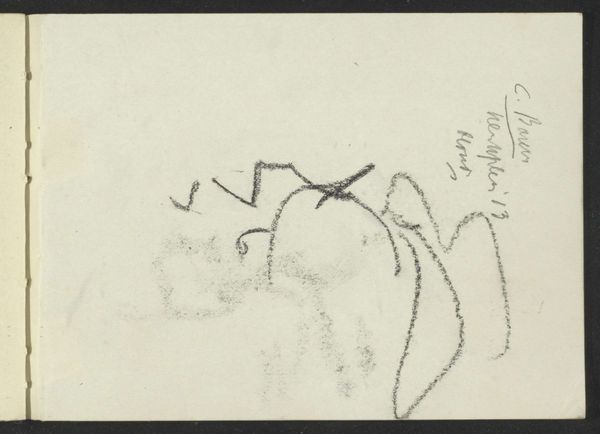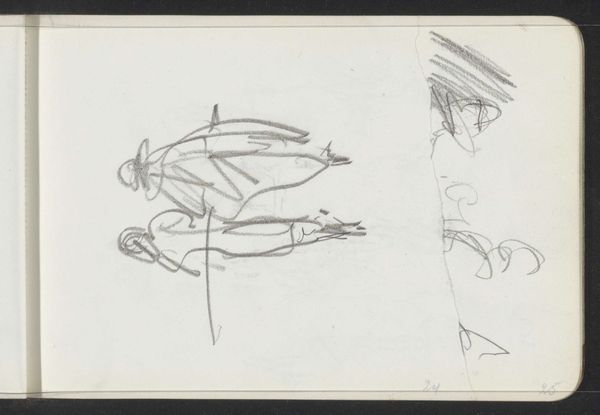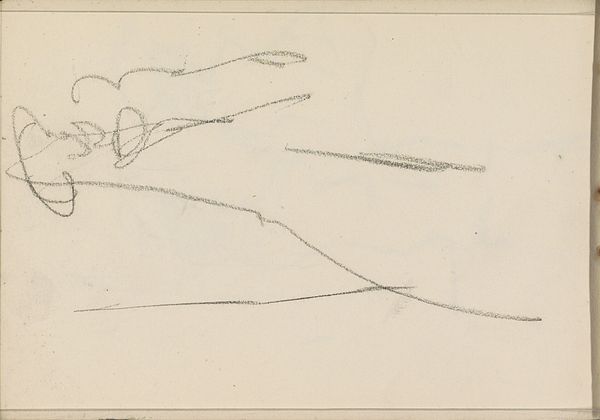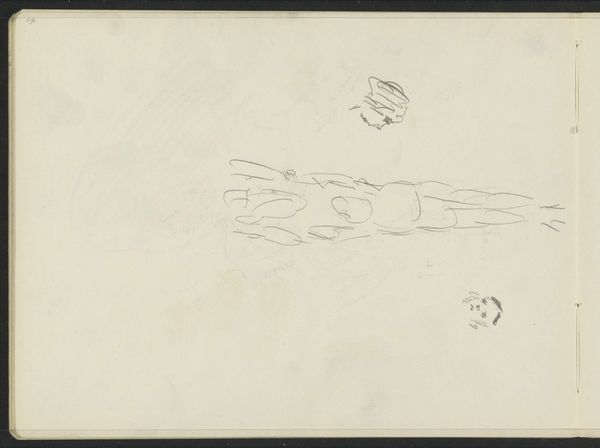
Copyright: Rijks Museum: Open Domain
Editor: So here we have Isaac Israels' "Standing Woman with Hat, Seen from the Back," created sometime between 1875 and 1934. It's a pencil drawing, and I'm struck by its seeming simplicity, almost like a fleeting sketch capturing a moment. What can you tell me about it? Curator: Well, what strikes me most about this sketch is the artist's choice of material - a humble pencil. It speaks volumes about accessibility and the democratization of art production. Israels, by opting for pencil rather than, say, oil paints, engages with a tool readily available to many. It hints at the working-class subject matter often found in Impressionist circles; how might we interpret the relationship between Israels and his subject given this very deliberate choice? Editor: That's interesting. I hadn't thought about the social implications of the materials. I was mostly focused on the image itself, but you are saying the choice of pencil democratizes the art production itself? Curator: Exactly. Think about the art market at the time. How was Israels, through the use of drawing and portraying working class subject, challenging the high/low art divide through both material and subject representation? What statement might he be making about the value of everyday life? Editor: So, the art wasn’t just *about* everyday life, the means of making it was everyday too. It does make me rethink the sketch, appreciating it's social commentary. Thanks! Curator: Absolutely, examining material choices invites a far more nuanced reading of what otherwise appears as an unremarkable drawing, isn’t it?
Comments
No comments
Be the first to comment and join the conversation on the ultimate creative platform.




